Is The Phantom Pain unfinished?
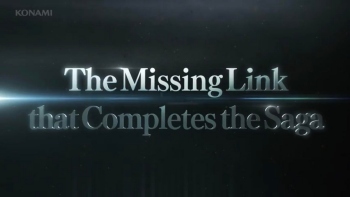
Editorial by Jen Miller, Posted on September 5, 2021
Despite receiving glowing reviews from the gaming press, Metal Gear Solid V: The Phantom Pain has become highly divisive among fans. Many were disappointed in its sparse story and felt that the game’s ending was abrupt and lacking closure. Some have theorized that the reason the game feels so unsatisfying is because the game might have been shipped before it was completed due to the falling out between Hideo Kojima and Konami.
Despite the game’s five year development cycle, debates over the issue tend to devolve into blaming every perceived fault on Konami “rushing” its release. This article attempts to untangle fact from fiction.
Exhibit A: Concept art for an older Chico and audio files implying a usable Battle Gear were uncovered. Neither appear in the final game.
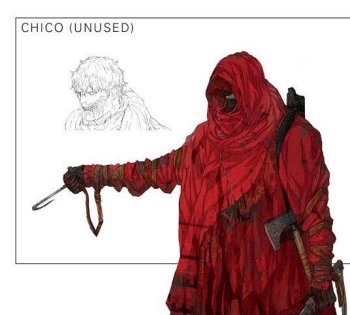
A certain amount of cut content is to be expected during the development of any game. Metal Gear 2: Solid Snake was originally going to have a mass-production Metal Gear model that was cut due to ROM-size limitations. The Grand Game Plan for Metal Gear Solid 2: Sons of Liberty outlined many ideas and features that wouldn’t be in the final game. “Third Sun,” Act 3 of Metal Gear Solid 4: Guns of the Patriots, was originally going to feature Snake escorting an injured Big Mama through the sewers.
As cool as seeing an older, traumatized Chico would’ve been, he’s not the first character to go unused in a Metal Gear game. The original Metal Gear Solid was going to feature a character called “El Mariachi” as part of the Codec cast. Sons of Liberty was planned to have a boss dubbed “Old Boy.” The End in Metal Gear Solid 3: Snake Eater ended up reusing ideas from the cut character, but that hardly means Sons of Liberty was an unfinished game by this character’s omission.
As for the playable Battle Gear, we actually have a reason for why it was cut—Kojima was concerned that it threw off the game’s balance.
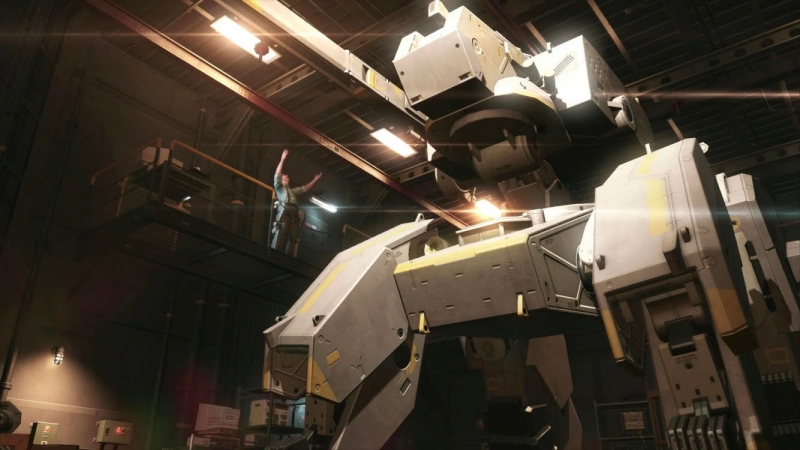
This “spin-off of Metal Gear technology” is almost as useless as Metal Gear Rising’s story.
This isn’t the first time unused audio for a Metal Gear game were uncovered. Dataminers found a call from Old Snake’s return to Shadow Moses in Guns of the Patriots where he reminisces about Meryl in the ladies room, which is inaccessible in the final game.

If the mere existence of cut content is proof of The Phantom Pain being unfinished, then practically every game is unfinished by that standard. Beta versions of Sonic the Hedgehog 2 featured several zones not seen in the final game, though one of them reappeared as an Easter egg in the mobile version remaster. Halo 2 infamously ended on a cliffhanger, not due to artistic reasons, but because Bungie ran out of time and couldn’t wrap up the story with a final level, leaving players to wait three years and buy a new console to “finish the fight.”
Unlike Halo 2, however, The Phantom Pain ended as Kojima intended. It just wasn’t the ending many fans wanted.
Exhibit B: There are scenes shown in trailers that are absent in the final game.
Nearly every Metal Gear game has trailers that use scenes absent from the final game. The E3 2000 trailer for Sons of Liberty depicts Snake escaping the sinking Tanker as a playable segment. The E3 2006 trailer for Guns of the Patriots featured numerous unused scenes, such as Otacon crying in the helicopter, Liquid Ocelot making a reference to the Biblical story of Cain and Abel, or Old Snake putting a gun to his mouth in some random place in the Middle East.
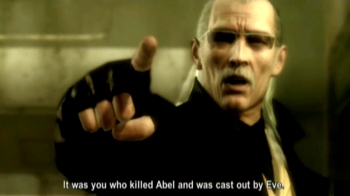
Other times the same animations are used but play out in a different location, often with different character models. Ninja Raiden’s debut at the end of Guns of the Patriots’ E3 2006 trailer took place in the Middle East, but played out like it did in the South America portion of the final game. Most infamously, Sons of Liberty’s E3 2001 trailer showed Solid Snake in the place of Raiden in various scenes.
The Red Band version of The Phantom Pain’s E3 2013 trailer got fans excited for a return to Camp Omega, only to later be disappointed when these scenes were seemingly not in the final game. Kojima mentioned plans for The Phantom Pain to include playable missions set in Camp Omega for those who have played Metal Gear Solid V: Ground Zeroes, but this seems to have been another cut feature. However, the animations from the trailer are actually in the final game. Rather than a Camp Omega POW, it is Silent Basilisk, the mute Hamid fighter from “Episode 6: Where Do The Bees Sleep?” who is tortured in Afghanistan, and can later be killed by Soviet gunfire if the player doesn’t intervene.

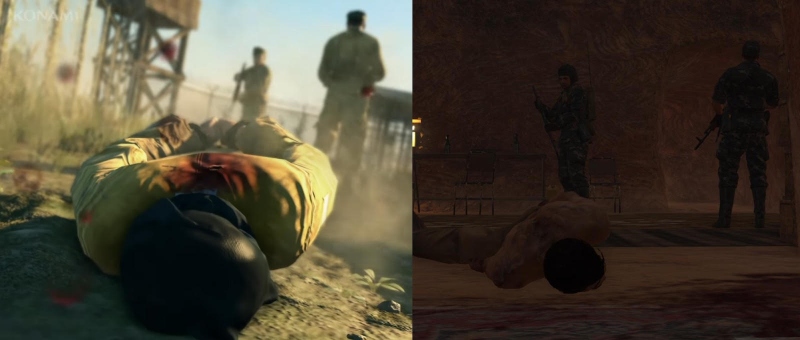
Likewise, depending on the time of day, the scene of child soldiers being trained to fire weapons plays out in-game during “Episode 13: Pitch Dark.”
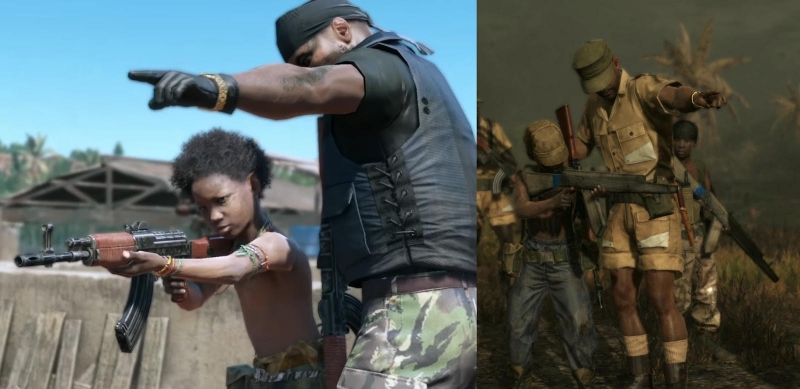
The animation of Venom Snake falling to his knees and yelling into the sky, from the E3 2014 trailer, seems to have been used for “Episode 43: Shining Lights, Even in Death.”
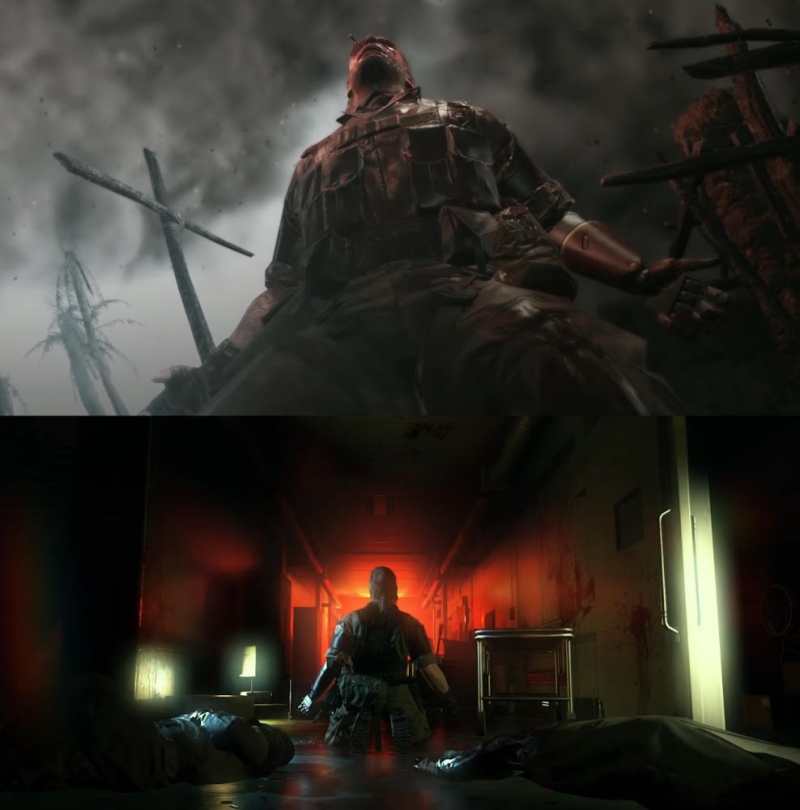
Trailers—especially Kojima’s trailers—aren’t necessarily made to literally show what’s in the final work, they’re made to show the style, tone, and premise to a potential audience. Even if trailers show scenes that would ultimately be cut from the final film, this doesn’t necessarily mean that they’re “incomplete.”
Exhibit C: “Chapter 2: Race” featured numerous repeated missions, suggesting that corners were cut to artificially lengthen the game.
To understand the structure of Chapter 2 of The Phantom Pain, it’s best to compare it to the previous “Tactical Espionage Operations” Metal Gear game: Metal Gear Solid: Peace Walker.
Storywise, The Phantom Pain’s “Chapter 1: Revenge” is the equivalent of Chapters 1 through 4 of Peace Walker, where the main plot unfolds and Snake defeats the main villain. Meanwhile, The Phantom Pain’s “Chapter 2: Race” is a kind of “epilogue” chapter, similar to Peace Walker’s “Chapter 5: Outer Heaven,” where players complete side-missions while being drip-fed story progress.
Players were annoyed by the repetitive Zadornov Search missions in Peace Walker, especially as they had to play through Extra Ops just to unlock them and advance the plot. The need to develop Mother Base further to a specific point where the true ending can be unlocked was also seen as tedious. A similar problem exists in The Phantom Pain, with its use of Side Ops and higher difficulty versions of previous missions to progress the story.
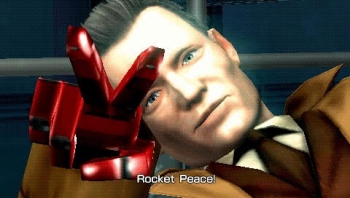
However, despite popular belief, none of these harder repeat missions are required to complete the game. The player can progress the story by playing a few Side Ops between story events, just like how Zadornov Search missions can be unlocked by playing a few Extra Ops in Peace Walker.
Should these harder variants have been in a separate Mission List in order to avoid confusion? Probably, but that’s another matter.
Ultimately, a story-light, side-content focused epilogue chapter seems to just be how “Tactical Espionage Operations” Metal Gear games are structured.
Exhibit D: The datamined “Chapter 3: Peace” title card proves that there was an entire third of the story cut from the game.
 Maybe the real “Chapter 3” was the friends we made along the way.
Maybe the real “Chapter 3” was the friends we made along the way.The only thing the datamined findings “prove” is that a title card for Chapter 3 was, at one point, meant to play during the game. Occam’s razor dictates that the explanation that requires the least assumptions is the most likely.
Given the subtitle “Peace,” a likely candidate for this would be after the FOB nuclear disarmament cutscene was triggered. This is supported by former Kojima Productions LA community manager, Robert Allen Peeler, though the title card has yet to appear after several false disarmaments. Still, this doesn’t mean the title card wasn’t at least intended to be used for the disarmament cutscene at some point during development, only to be later removed for unknown reasons.
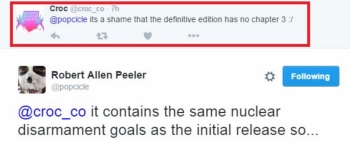 Yeah, real shame you get the prologue, main game, and all DLC on one disc.
Yeah, real shame you get the prologue, main game, and all DLC on one disc.Another possible explanation stems from the original Japanese version of the title card—instead of “Peace,” 共生 can be literally translated as “Symbiosis” or “To Live Together.” This is reflected in the line said by Kazuhira Miller in both the Japanese and English versions after the credits for “Episode 46: Truth: The Man Who Sold The World,” where he begrudgingly agrees to continue assisting Ocelot and Venom Snake until eventually helping Solid Snake defeat the true Big Boss in Zanzibar Land:
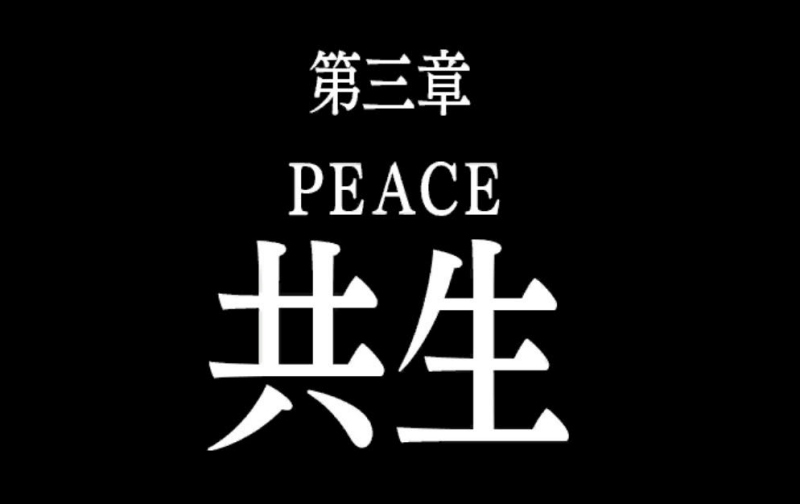
Thus, “Chapter 3: [Coexistence]” may have simply referred to the post-game. This is similar to Episode 15 of Death Stranding, which takes place two weeks before the events of Episode 14 (the game’s proper ending), and simply involves Sam completing side-objectives he missed out on while playing the main game. As with the nuclear disarmament ending explanation though, the reason for the title card being removed from the final game remains unknown.
Admittedly both of these explanations are speculative, but they require less bold assumptions than “Kojima wrote up another Chapter worth of story, after the main villain was already killed, but had to cut it.” Especially given the next point.
Exhibit E: The “Phantom Episode: Kingdom of Flies” bonus feature is the clearest proof that a substantial amount of story content was cut from the game.
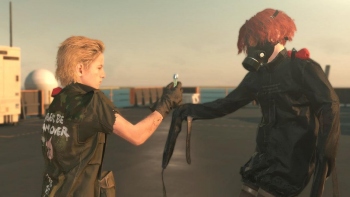 In all honesty, neither of these characters added much to the story anyway.
In all honesty, neither of these characters added much to the story anyway.If there’s one thing that Konami’s dissolution of Kojima Productions can be blamed on, it’s the cancellation of Kingdom of Flies, which would’ve resolved plot threads involving Eli and the English parasite strain he obtained from The Third Boy. Whereas things like Chico and the Battle Gear can be chalked up as the kind of content that any game would cut during development, the remnants of Kingdom of Flies can be felt within the game itself, as the plot-thread of Eli hijacking Sahelanthropus and fucking off with The Third Boy and the rest of the child soldiers remains unresolved.
With that said, the way the media portrayed this cut content as a “cut ending” was both inaccurate and dishonest. Kingdom of Flies merely wrapped up a sub-plot. The big twist in Episode 46 was always the ending that the game was building up to since the opening scene.
Furthermore, Kingdom of Flies wasn’t intended to be part of the base game anyway. According to leaked documents related to recording the game’s script, it was meant to be post-launch downloadable content.
 From the leaked demo-jan20151 document, screenshot by @CapLagRobin.
From the leaked demo-jan20151 document, screenshot by @CapLagRobin.The fact that Kojima Productions was doing motion capture for post-launch DLC also indicates that Chapter 3 probably wasn’t anywhere near as elaborate and expansive as people imagine. After all, why do motion capture for DLC if you’re not even done working on a whole ass chapter of the core game?
For what it’s worth, Kenji Yano, one of Kojima’s closest confidants (and co-writer of Death Stranding, under the pen name “Hitori Nojima”), believes that the game is complete even without Kingdom of Flies.
Given Yano’s personal relationship with Kojima, it would be strange if he wouldn’t relay any possible animosity about the game’s incompleteness.
In any case, The Phantom Pain wouldn’t be the first time a Metal Gear game ended a plot-thread related to Liquid hijacking a Metal Gear on an ambiguous note—that was how Sons of Liberty, which was originally intended to end the series chronologically, handled Snake going after Liquid Ocelot and the Metal Gear RAY he hijacked.
A Lasting Pain
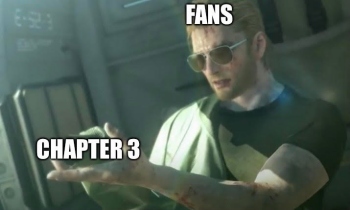 Metal Gear fans feel the lingering pain of a Chapter that never was.
Metal Gear fans feel the lingering pain of a Chapter that never was.Ultimately, the driving motivation behind these theories seems to be that to many fans, the idea that Kojima simply made a game they didn’t like is unthinkable. Funnily enough, Kojima actually anticipated the audience feeling underwhelmed and dissatisfied with the game following Skull Face’s demise.
Of course, how much of the game’s faults can be attributed to a meta reasoning is uncertain. Some have theorized that Kingdom of Flies, “The Phantom Episode,” was deliberately left out in order to accentuate the game’s “phantom pain” sensation, though this too is a bit of a stretch given the time and resources that likely went into the DLC mission before it was scrapped.
Some point to the lackluster boss fights as evidence of the game being rushed, but Kojima himself seems to feel that their open-ended design and the ability to simply run away from them is actually an “advancement” in game design.
 If The Skulls “Parasite” Unit are an “advancement in game design,” then we need some of Dr.Clark’s reverse-evolution techniques to go back to when bosses were unique and fun.
If The Skulls “Parasite” Unit are an “advancement in game design,” then we need some of Dr.Clark’s reverse-evolution techniques to go back to when bosses were unique and fun.The comparative lack of cutscenes was a deliberate artistic choice for the game as well, along with Snake’s lack of speaking.
Even if Kingdom of Flies was finished and included at launch, it wouldn’t have magically fixed every problem people had with the game—we would’ve simply gotten a resolution to a subplot and heard Eli say more lines he would repeat 21 years later. It seems as though those who want Kojima to “finish the game” simply wanted a completely different game than what he intended to make.
It’s fine to be disappointed or wish that Kojima had done things differently with his final game in the series. However, if your concern was genuinely that Kojima was unable to finish The Phantom Pain as he intended, then worry no more. Based on the available evidence, the game that shipped on disc, day one, is the game Kojima intended. For better or worse.